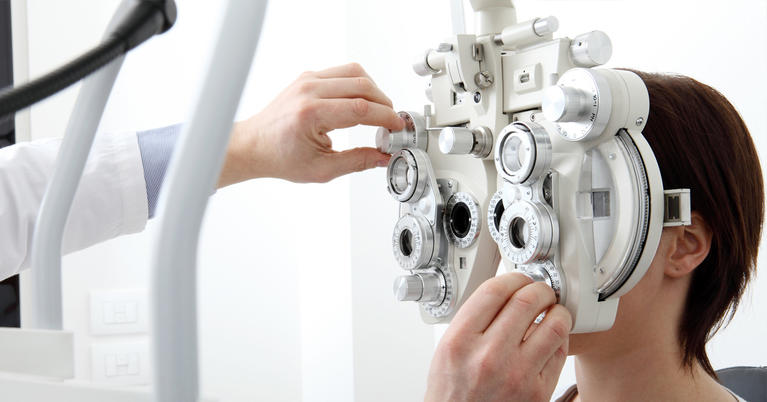Andalusia Pediatrics: Compassionate Take Care Of Your Children
Andalusia Pediatrics: Compassionate Take Care Of Your Children
Blog Article
The Advantages And Disadvantages of Different Refractive Surgeries for Boosted Eyecare

LASIK Surgical Procedure
LASIK surgery is a typically executed refractive procedure that intends to fix vision issues such as nearsightedness, farsightedness, and astigmatism. Throughout the treatment, a thin flap is produced on the cornea, and a laser is used to reshape the underlying cells, dealing with the refractive error.
One of the main advantages of LASIK surgery is the rapid enhancement in vision experienced by numerous people. Most individuals notice a substantial improvement in their vision shortly after the procedure, with marginal downtime needed for recuperation. In addition, LASIK is known for its high success price and low incidence of issues when performed by proficient doctors. Like any kind of medical treatment, LASIK additionally brings some threats, including completely dry eyes, glare, halos, and under or overcorrection of vision. It is vital for individuals taking into consideration LASIK surgical procedure to undertake a thorough examination by an eye care expert to determine if they are suitable candidates for the treatment.
PRK Procedure
The PRK procedure, also referred to as Photorefractive Keratectomy, is a kind of refractive surgical treatment that aims to fix vision issues similar to LASIK surgical procedure. Unlike LASIK, which includes developing a flap in the cornea, PRK works with the surface area layer of the cornea. During the PRK treatment, the outer layer of the cornea, called the epithelium, is removed to enable improving of the underlying corneal cells with an excimer laser. This improving assists to deal with refractive errors such as astigmatism, nearsightedness, and farsightedness.
One of the benefits of PRK over LASIK is that it gets rid of the danger of flap-related problems since no flap is developed during the surgical procedure. This can be helpful for individuals with slim corneas or those involved in contact sporting activities where eye injury is a possibility. Nevertheless, the recuperation time for PRK is usually longer compared to LASIK, as the outer layer of the cornea requires time to regenerate after the procedure. Despite the longer healing duration, PRK can be an ideal choice for people seeking vision correction surgical treatment.
SMILE Surgery
A sophisticated refractive surgical treatment method getting appeal in the field of ophthalmology is SMILE Surgical procedure. Little Incision Lenticule Removal (SMILE) is a minimally intrusive procedure that corrects vision by improving the cornea using a femtosecond laser. Unlike conventional LASIK surgical treatment, SMILE Surgery entails developing a small laceration in the cornea to draw out a lenticule, which leads to much less interruption to the corneal structure and potentially faster recovery times.
Among the key advantages of SMILE Surgical procedure is its capacity to deal with nearsightedness (nearsightedness) and special info astigmatism with high precision, resulting in excellent aesthetic outcomes for people. The minimally intrusive nature of the procedure additionally lowers the danger of complications such as completely dry eye syndrome, making it a beneficial alternative for people looking for refractive surgical procedure.

LASEK Method
Having checked out the benefits and factors to consider of SMILE Surgical procedure, another significant refractive surgery method worth examining is the LASEK Strategy. LASEK, which stands for Laser-Assisted Subepithelial Keratectomy, is a kind of laser eye surgical procedure that intends to deal with refractive mistakes such as myopia (nearsightedness), hyperopia (farsightedness), and astigmatism.
Unlike Learn More LASIK, LASEK does not include creating a corneal flap. Instead, during a LASEK treatment, the surgeon uses a diluted alcohol remedy to loosen up the thin external layer of the cornea, understood as the epithelium. This layer is then delicately moved apart to allow the laser to reshape the underlying corneal cells. As soon as the cornea has actually been improved to the wanted degree, the epithelial layer is repositioned.
One of the main advantages of LASEK is that it can be suitable for people with slim corneas who might not be excellent prospects for LASIK. Additionally, LASEK usually results in marginal post-operative pain and a quicker recuperation time contrasted to PRK. The aesthetic recovery procedure with LASEK may be slightly longer than with LASIK.
Implantable Call Lenses
Implantable Get in touch with Lenses use a long-term vision improvement solution for people seeking a choice to typical contact lenses or glasses. These lenses, likewise known as phakic intraocular lenses, are surgically inserted into the eye to deal with refractive errors such as nearsightedness (nearsightedness), hyperopia (farsightedness), and astigmatism. andalusia pediatrics. Unlike typical get in touch with lenses that rest on the surface of the eye, implantable call lenses function within the eye itself, supplying clear vision without the requirement for everyday upkeep or removal
One of the essential benefits of implantable contact lenses is their permanence. When placed, they can stay in the eye forever, providing constant and steady vision correction. Furthermore, these lenses can be an outstanding option for individuals who are bad prospects for laser eye surgical treatment or that choose a relatively easy to fix published here vision improvement procedure.
Nevertheless, implantable contact lenses do carry some dangers, consisting of the capacity for cataracts or raised eye pressure. It is crucial for individuals considering this choice to seek advice from with an eye care expert to identify if implantable get in touch with lenses are the ideal choice for their specific requirements and eye wellness.
Conclusion
In final thought, each type of refractive surgical treatment has its own advantages and negative aspects. LASIK surgical treatment is popular for its quick recovery time, while PRK treatment may be suitable for individuals with thin corneas.

Overall, SMILE Surgical treatment presents an encouraging choice for people looking to boost their vision with refractive surgical treatment.
Report this page